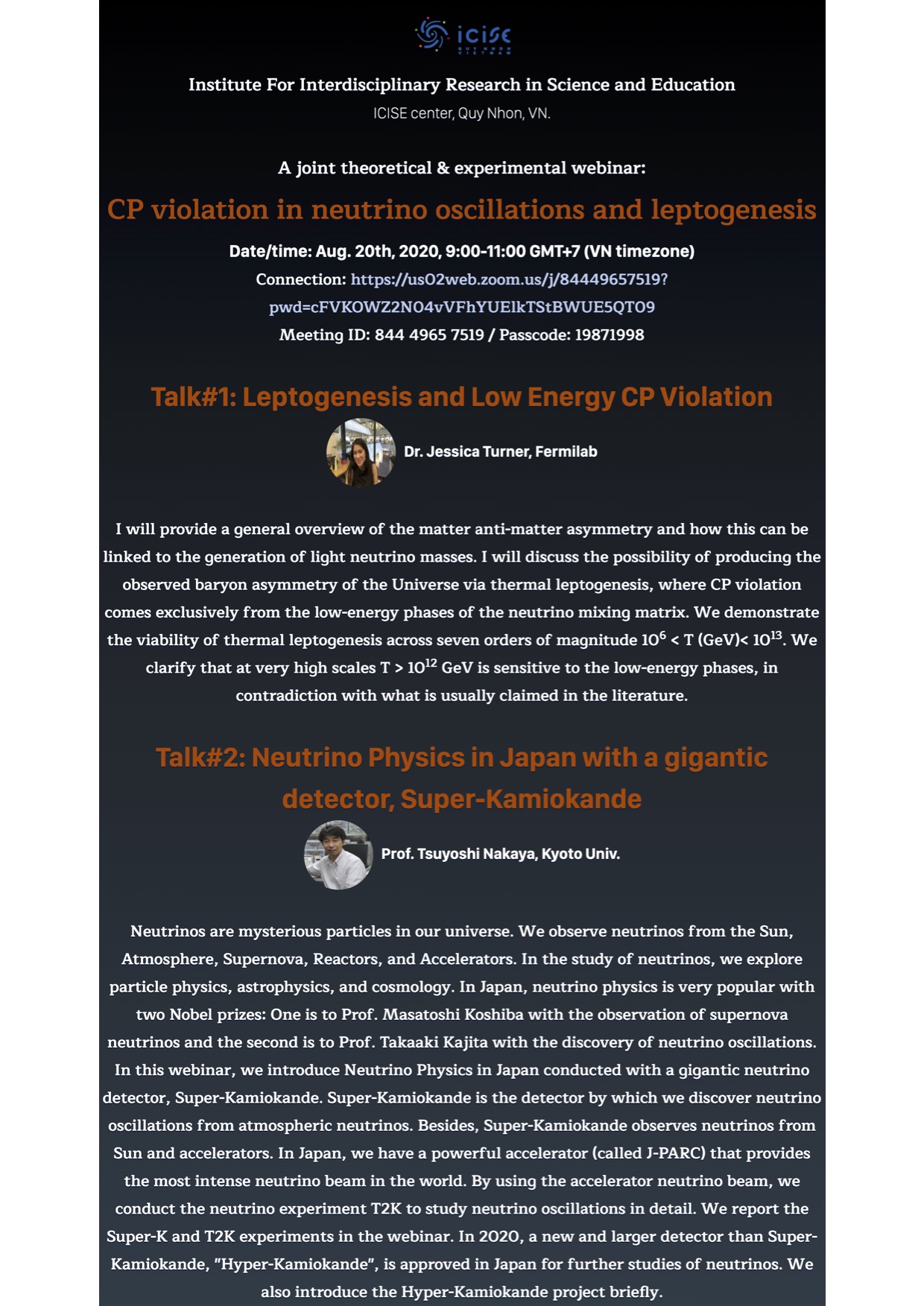Webinar: CP violation and leptogenesis
Date/time: Aug. 20th, 2020, 9:00-11:00 GMT+7 (VN timezone)
Connection: https://us02web.zoom.us/j/84449657519?pwd=cFVKOWZ2N04vVFhYUElkTStBWUE5QT09
Meeting ID: 844 4965 7519 / Passcode: 19871998
Webinar page: https://ifirse.icise.vn/nugroup/event/20200820_cpviolation_leptogenesis.html
Talk#1: Leptogenesis and Low Energy CP Violation, Dr. Jessica Turner, Fermilab, US
Abstract: I will provide a general overview of the matter anti-matter asymmetry and how this can be linked to the generation of light neutrino masses. I will discuss the possibility of producing the observed baryon asymmetry of the Universe via thermal leptogenesis, where CP violation comes exclusively from the low-energy phases of the neutrino mixing matrix. We demonstrate the viability of thermal leptogenesis across seven orders of magnitude 106 < T (GeV)< 1013. We clarify that at very high scales T > 1012 GeV is sensitive to the low-energy phases, in contradiction with what is usually claimed in the literature.
Talk#2: Neutrino Physics in Japan with a gigantic detector, Super-Kamiokande, Prof. Tsuyoshi Nakaya, Kyoto Univ., JP
Abstract: Neutrinos are mysterious particles in our universe. We observe neutrinos from the Sun, Atmosphere, Supernova, Reactors, and Accelerators. In the study of neutrinos, we explore particle physics, astrophysics, and cosmology. In Japan, neutrino physics is very popular with two Nobel prizes: One is to Prof. Masatoshi Koshiba with the observation of supernova neutrinos and the second is to Prof. Takaaki Kajita with the discovery of neutrino oscillations. In this webinar, we introduce Neutrino Physics in Japan conducted with a gigantic neutrino detector, Super-Kamiokande. Super-Kamiokande is the detector by which we discover neutrino oscillations from atmospheric neutrinos. Besides, Super-Kamiokande observes neutrinos from Sun and accelerators. In Japan, we have a powerful accelerator (called J-PARC) that provides the most intense neutrino beam in the world. By using the accelerator neutrino beam, we conduct the neutrino experiment T2K to study neutrino oscillations in detail. We report the Super-K and T2K experiments in the webinar. In 2020, a new and larger detector than Super-Kamiokande, “Hyper-Kamiokande”, is approved in Japan for further studies of neutrinos. We also introduce the Hyper-Kamiokande project briefly.
